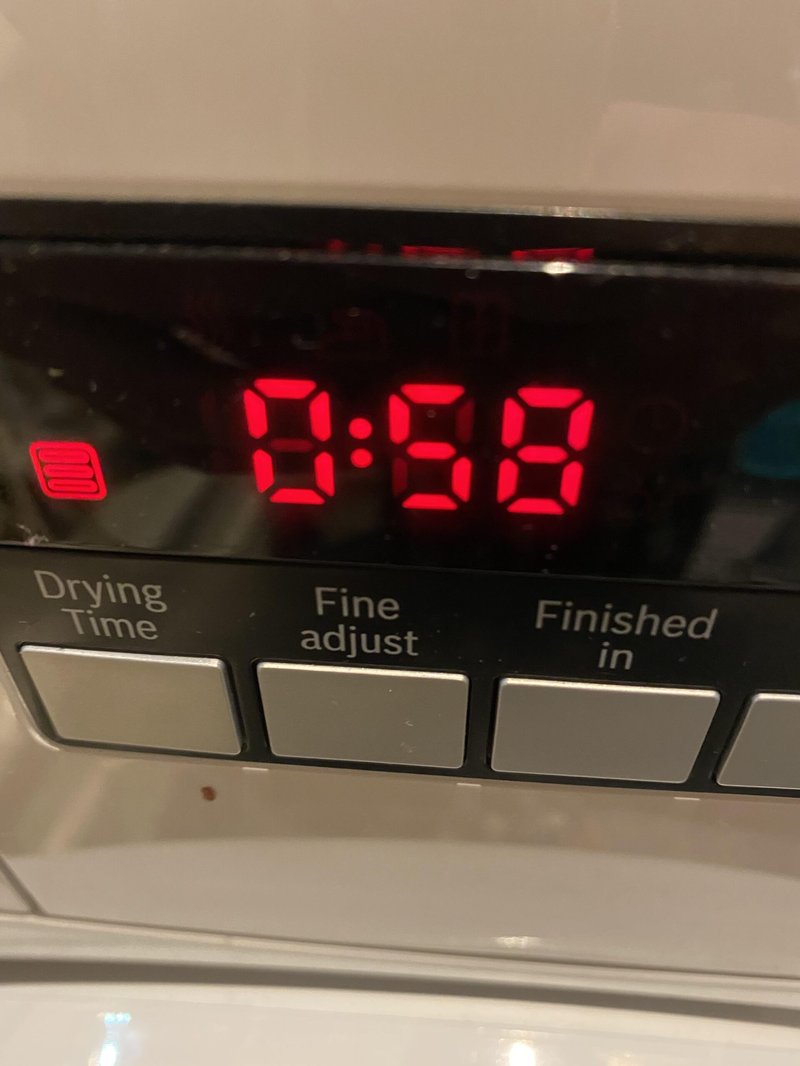
Bosch dryers are known for their efficiency and reliability, but like any complex appliance, they can sometimes run into issues. Seeing an “E1” code on your dryer is its way of signaling a problem, often related to a malfunction with the dryer’s moisture sensor or issues with the ventilation. While confronting error codes might seem daunting, the good news is that many of these common causes are easily understood and not too difficult to address with a bit of guidance.
Understanding the E1 Error Code
When it comes to household appliances, error codes like “E1” are your appliance’s best attempt at communicating with you. In the case of Bosch dryers, the “E1” code is typically associated with a moisture sensor problem. You might wonder what a moisture sensor does. Well, it’s like the gadget’s version of a weather forecast, determining whether your clothes are still damp or perfectly dry.
Most modern dryers, including those made by Bosch, are equipped with sophisticated sensors that help optimize drying times and energy usage. These sensors detect the level of moisture in your clothes and adjust the cycle accordingly. When you see an “E1” error, it often means that your dryer is having trouble getting an accurate reading from this sensor. This can lead to cycles that run too long or too short, leaving clothes either too damp or unnecessarily over-dried.
Now, you might be thinking, “Why does this sensor fail?” Sometimes, it’s as simple as accumulated lint or residues from fabric softeners coating the sensor. This is akin to trying to read a book through smudged glasses — things just won’t appear clearly. Moreover, electrical faults or wiring issues within the sensor can also be culprits. By ensuring the sensor is clean and unobstructed, you can often resolve the issue without needing to call for professional repairs.
The Role of Ventilation Issues
While moisture sensor problems are a leading cause of the “E1” error, another major player can be ventilation issues. Imagine trying to breathe through a straw — that’s what your dryer experiences when its ventilation system is blocked. Your Bosch dryer needs to expel warm air efficiently to dry clothes properly, and any obstruction in the vent hinders this process.
Blocked or kinked dryer vents can cause the dryer to overheat and trigger an “E1” error. Over time, lint and debris accumulate in these vents, much like how leaves can clog a gutter. This buildup not only affects performance but can also be a potential fire hazard. Ensuring your dryer vent is clear and free-flowing is crucial, not just for preventing error codes, but also for safety.
To address this potential cause, regularly inspect and clean your dryer’s vent system. It’s important to disconnect the dryer and thoroughly clean the vent and duct with a vacuum or a specialized brush. If you’ve done this and the “E1” error persists, the issue might be elsewhere, but eliminating a clogged vent as a possibility is a solid first step.
Electrical and Wiring Concerns
Beyond moisture sensors and ventilation, sometimes the root cause of that pesky “E1” error is linked to the dryer’s electrical components or wiring. Electricity is the lifeblood of any appliance, and any interruptions or faults within the system can trigger error codes. Imagine trying to listen to a radio with faulty wiring — the signal would be inconsistent, right? That’s similar to what your dryer experiences with wiring issues.
Wiring problems could stem from a variety of sources. Loose connections, damaged wires, or electrical surges can disrupt the normal operation of your dryer. These issues might arise over time due to regular wear and tear, much like how a favorite pair of shoes eventually show signs of age. If you suspect an electrical issue, it’s essential to handle this with care and, if necessary, consult a professional to avoid any risks.
In situations where the wiring is the issue, you might need to replace damaged components or tighten connections. Always ensure the dryer is unplugged before attempting any inspections. If you’re not comfortable dealing with electrical components, hiring a professional is the safest and most effective route.
Preventative Measures and Final Thoughts
Now that we’ve tackled the common causes of the “E1” error code, let’s talk about how you can prevent it from happening again. Regular maintenance is key. Think of it like taking your car in for a tune-up — it keeps things running smoothly and prevents unexpected problems. For your dryer, this means cleaning the lint filter after every use, periodically wiping down the moisture sensor, and ensuring the vents are free from clogs.
Additionally, handling your dryer with care and using it according to the manufacturer’s instructions can extend its lifespan and efficiency. Avoid overloading the dryer, as this can strain components and lead to wear over time. By treating your machine well, you minimize the risk of encountering technical hiccups like the “E1” error.
Should the “E1” error persist despite your best efforts, it may indicate a deeper mechanical issue that requires professional evaluation. Appliances, much like our favorite gadgets or vehicles, sometimes need expert attention to get back in working order. Don’t hesitate to reach out for help if things seem beyond your scope.
In the end, while dealing with appliance issues isn’t exactly the highlight of anyone’s day, understanding what’s going on and taking the right steps can save you time and stress. With a bit of care and know-how, tackling the Bosch dryer “E1” error code doesn’t have to feel like solving a mystery alone.